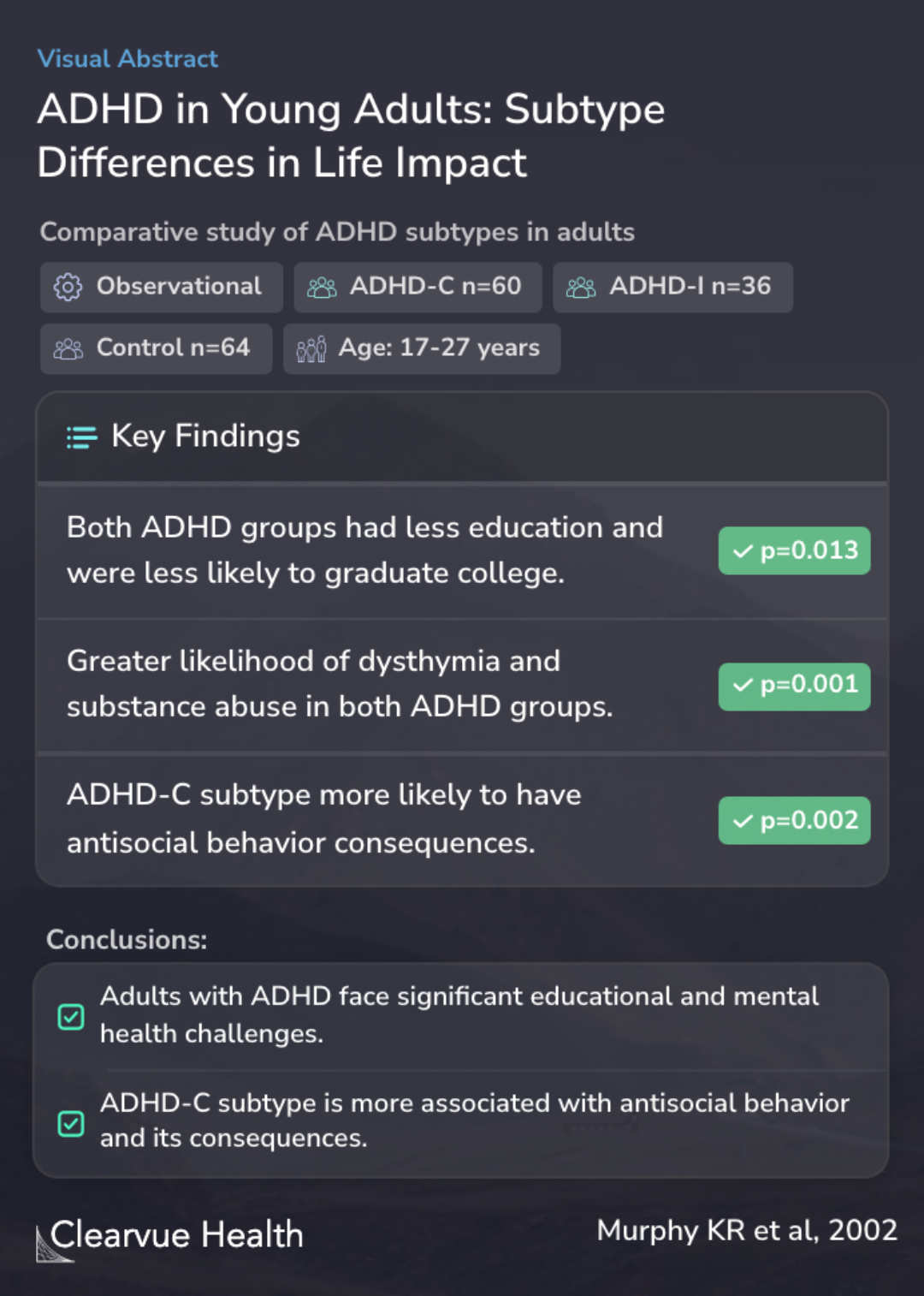Young adults with attention deficit hyperactivity disorder: subtype differences in comorbidity, educational, and clinical history
ADHD in Young Adults: Subtype Differences in Life Impact
Murphy KR, Barkley RA, Bush T

Objectives
The study embarked on a journey to understand the differences between subtypes of attention deficit hyperactivity disorder (ADHD) in young adults, focusing on their comorbidity, educational experiences, and treatment histories. By exploring these aspects, the authors aimed to shed light on how these subtypes might influence the lives of individuals aged 17-27 who are grappling with ADHD.
The present study sought to examine subtype differences in comorbidity and in antisocial, educational, and treatment histories among young adults (ages 17-27) with attention deficit hyperactivity disorder (ADHD).
Methods
The methods employed by the researchers involved a comparative analysis between two subtypes of ADHD: the Combined Type (ADHD-C) and the Predominantly Inattentive Type (ADHD-I). In this endeavor, they also included a control group of community adults for a more comprehensive understanding.
Comparisons were made between ADHD Combined Type (ADHD-C; N = 60) and Predominantly Inattentive Type (ADHD-I; N = 36) relative to each other and to a community control group of 64 adults.
Results
The findings revealed that both ADHD groups had notably less education, with a decreased likelihood of graduating from college. Additionally, both groups showed a higher probability of encountering dysthymia, substance abuse issues, and significant psychological distress. Interestingly, the ADHD-C group, compared to the ADHD-I group, exhibited more pronounced antisocial behaviors, including a higher incidence of oppositional defiant disorder, interpersonal hostility, paranoia, suicide attempts, and arrests.
Both ADHD groups had significantly less education, were less likely to have graduated from college, and were more likely to have received special educational placement in high school. Both groups also presented with a greater likelihood of dysthymia, alcohol dependence/abuse, cannabis de...
Conclusions
The conclusions drawn from the study align with previous research on ADHD in children, extending these insights to adults. The study underscores that the impulsivity associated with the ADHD-C subtype could lead to more severe antisocial behaviors and their consequences than the ADHD-I subtype.
These results are generally consistent with previous studies of ADHD in children, extend these findings to adults with ADHD, and suggest that the greater impulsivity associated with the ADHD-C subtype may predispose toward greater antisocial behavior and its consequences than does ADHD-I...
Key Takeaways
Context
In the broader context, this study dovetails with other research, such as Grizenko et al. (2010) and Lahey BB et al. (2010), which also investigated ADHD subtypes. These studies collectively highlight the dynamic nature of ADHD and its subtypes. Notably, they underscore that individuals with combined ADHD exhibit different challenges and responses compared to those with the inattentive subtype. This points to the ever-evolving understanding of ADHD, its subtypes, and their impacts over time, emphasizing the need for adaptable and individualized approaches to treatment and support for those affected by ADHD.